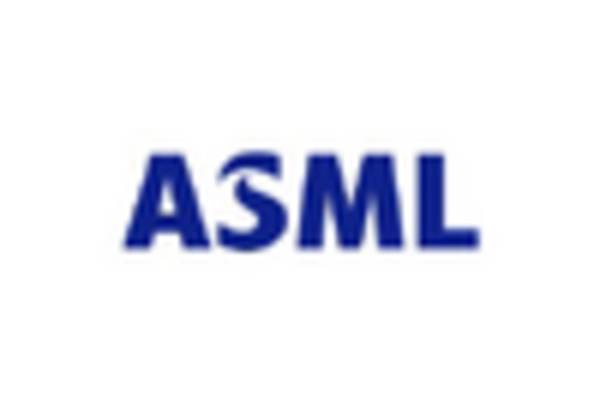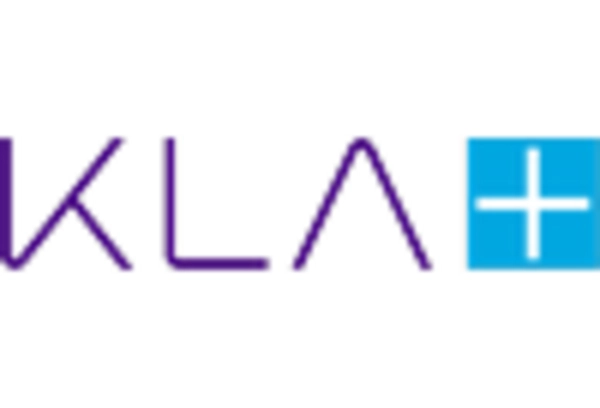Growing Focus on Energy Efficiency
Energy efficiency has emerged as a pivotal concern within the Semiconductor Front-end Equipment Market. As the global emphasis on sustainability intensifies, semiconductor manufacturers are increasingly prioritizing energy-efficient production processes. This shift is driven by both regulatory pressures and consumer demand for greener technologies. In 2025, it is anticipated that energy-efficient semiconductor manufacturing will account for a significant share of the market, as companies invest in equipment that minimizes energy consumption and reduces carbon footprints. The Semiconductor Front-end Equipment Market must align with these sustainability initiatives to remain relevant and competitive in an evolving landscape.
Expansion of 5G and IoT Technologies
The expansion of 5G networks and the Internet of Things (IoT) is significantly influencing the Semiconductor Front-end Equipment Market. As these technologies proliferate, the demand for semiconductors that support high-speed connectivity and data processing is escalating. In 2025, the market for 5G-related semiconductor devices is expected to grow substantially, driving the need for advanced front-end equipment capable of producing these components. This trend presents a lucrative opportunity for manufacturers within the Semiconductor Front-end Equipment Market, as they seek to capitalize on the growing demand for devices that enable seamless connectivity and enhanced user experiences.
Rising Demand for Advanced Electronics
The Semiconductor Front-end Equipment Market is experiencing a surge in demand driven by the increasing proliferation of advanced electronic devices. As consumer electronics, automotive applications, and industrial automation continue to evolve, the need for sophisticated semiconductor components becomes paramount. In 2025, the market for semiconductor devices is projected to reach approximately 600 billion USD, indicating a robust growth trajectory. This demand necessitates advanced front-end equipment capable of producing high-performance chips, thereby propelling investments in manufacturing technologies. The Semiconductor Front-end Equipment Market is thus positioned to benefit from this trend, as manufacturers seek to enhance production efficiency and meet the stringent performance requirements of next-generation electronics.
Technological Innovations in Semiconductor Manufacturing
Technological advancements play a crucial role in shaping the Semiconductor Front-end Equipment Market. Innovations such as extreme ultraviolet lithography (EUV) and atomic layer deposition (ALD) are revolutionizing the manufacturing processes, enabling the production of smaller, more efficient chips. These technologies facilitate the fabrication of devices with smaller nodes, which are essential for meeting the demands of high-performance computing and mobile applications. As of 2025, the adoption of these advanced technologies is expected to drive a significant portion of the market growth, with investments in R&D reaching new heights. The Semiconductor Front-end Equipment Market must adapt to these innovations to remain competitive and meet the evolving needs of semiconductor manufacturers.
Increased Investment in Semiconductor Manufacturing Facilities
The Semiconductor Front-end Equipment Market is witnessing a notable increase in investments aimed at expanding semiconductor manufacturing facilities. Governments and private entities are recognizing the strategic importance of semiconductor production, leading to substantial funding initiatives. In 2025, investments in semiconductor manufacturing are projected to exceed 100 billion USD, reflecting a commitment to bolster domestic production capabilities. This influx of capital is likely to enhance the demand for front-end equipment, as manufacturers seek to upgrade their facilities to accommodate advanced production techniques. Consequently, the Semiconductor Front-end Equipment Market stands to gain from this trend, as new facilities require state-of-the-art equipment to ensure efficiency and competitiveness.















Leave a Comment